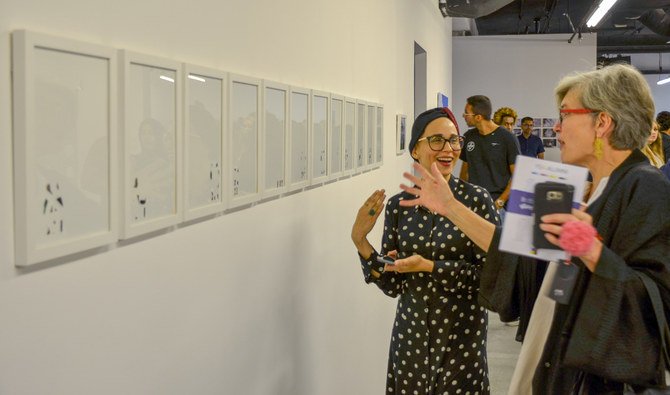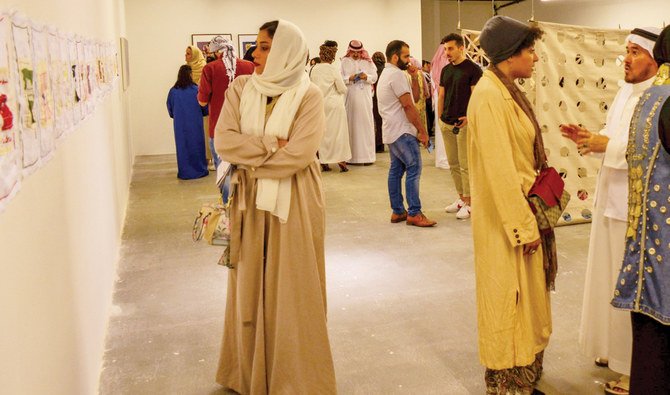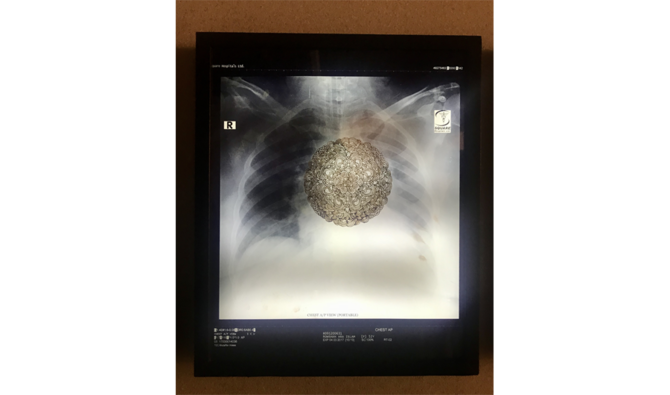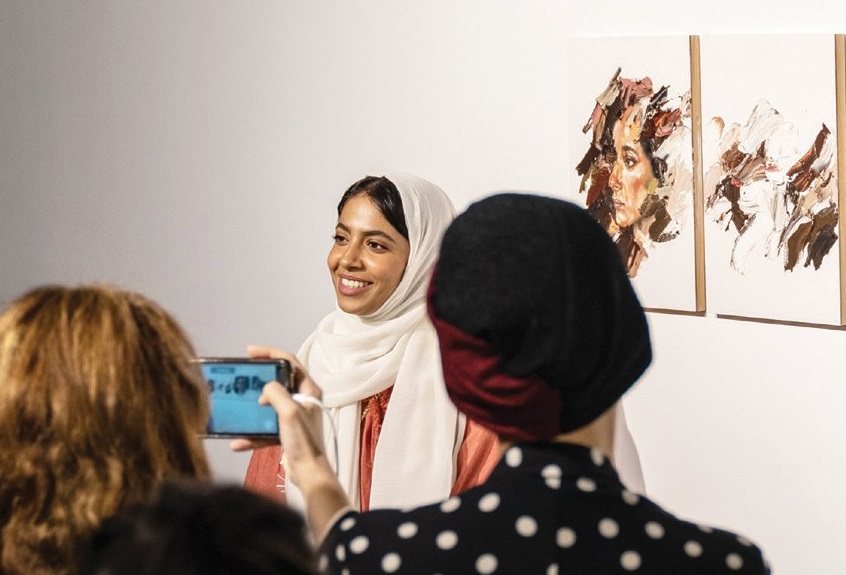









Ruba Obaid, Jeddah
An exhibition by emerging artists throwing a spotlight on the social changes taking place in Saudi Arabia has been launched in the Kingdom.
Athr Gallery in Jeddah is hosting “In the Midst of It All,” the sixth edition of its Young Saudi Artists (YSA) initiative, showcasing the works of 23 talented newcomers to the country’s growing art scene.
The YSA program, which began in 2011, aims to project the innovative and original content of Saudi-based artists onto a regional and international stage.
This year’s edition, curated by artist Zahra Bundakji, attempts to understand the societal reforms underway in the Kingdom and their implications on a collective and individual level.
The art display is the result of an open invitation to Saudi nationals and residents living in the Kingdom, aged between 19 and 40, to participate in the YSA initiative.
As this year’s exhibition theme, Bundakji posed a commonly asked question among youth about art, culture, and entertainment, “who are you, in the midst of it all?”
Bundakji told Arab News: “When I was preparing for the exhibition’s theme, I went around asking people what matters, and almost everyone said it’s our identity. It was based on everything around us, and now everything is changing, so who are we?”
She said that the exhibition contained artworks that expressed personal experiences and memories of childhood, identity crises, tragedies, traumas, and inner conflicts in an attempt to “tell people 100 years from now who we were in 2019. Through bringing all of these people together, you have an idea of what people are going through and begin to see a pattern.”
Most of the exhibitors are not from an art-related, academic background and have never exhibited before.
Aisha Zakia Islam, 27, a Saudi-born Bangladeshi multidisciplinary artist, is taking part with a series of elegies represented by henna patterns on X-rays belonging to her late mother.
“My work represents the process of accepting the loss, and turning something sad into something happier,” Islam told Arab News. “My mother loved henna, it was very ceremonial for her, and made her really happy. Working on this series was my mourning process.”
Islam said that henna becomes permanent on the X-ray, unlike the human skin, and trying to scrape it will remove the whole X-ray.
As an expatriate, she added that being able to present her artwork in Saudi Arabia and being exposed to the local art scene meant a lot to her. “Such initiatives usually target locals; I am glad to get this chance.”
Shaimaa Saleh, 24, a textile artist and printmaker based in Jeddah, explored themes of domesticity, family, memories, and time in her Athr display.
Her artwork takes its roots from “Majdolin,” a novel translated by Egyptian writer and poet Mustafa Lutfi Al-Manfaluti. It contains 22 pieces, each expressing a scene from the book and reflecting on the search for happiness.
“The text captivated me, and I couldn’t get over it. It lists scenes from our interactions with nature and people in our daily life as expected sources of comfort, happiness, and contentment.”
Using techniques such as embroidery, silkscreen printing and collage fabrics, Saleh’s art is inspired by her emotional experiences through everyday situations. The book’s text made her realize that she had misconstrued the source of happiness, and that it was “actually a journey, not a destination.”
She noted that the YSA initiative was important in introducing and giving space to young artists.
Mohammed Hammad, 36, a filmmaker and multidisciplinary artist, shared his experience of immigration and struggle with his fragmented identities in a video piece titled #Infinitesence83. His experimental short film presents an introspective examination of his immigration from Saudi Arabia and returning during the current socioeconomic change.
Through sound, film, and painting he highlights the stark contrasts between his country of birth, Saudi Arabia, and the European metropolitan cities where he was raised.
“I lived most of my life outside Saudi Arabia, and the video includes footage from my journey abroad in different countries and continents over the last seven years,” Hammad told Arab News.
“It is narrated by voice messages from my mother who used to send me a lot of messages updating me about the family, praying for me, and asking me to come back. And I’m finally here with her.”
Hammad said that he liked the idea behind the exhibition because it focused on personal experiences and inner crises. “Most of my art is expressive, it represents internal experiences and sometimes indirectly addresses social issues through self-reflection. In the past, exhibitions used to impose a certain topic on the artists, and my style was usually not in sync with their style.”
In September, the Athr Gallery invited artists from all disciplines to apply to take part in the YSA initiative. The program is designed to help young artists conceptualize their work and develop their projects, while allowing them to exhibit in a professional context, collaborate with a curator, and expose their work to criticism as well as to the marketplace.
“It is pleasant how the public and artists reacted to the initiative; we received over 200 applications, our biggest-ever number of applicants,” said Mohammed Hafiz, the gallery’s co-founder.
“There are two things we did differently this year. We appointed an independent curator and a partly international committee to select the artists,” Hafiz told Arab News. “We believe in supporting and stimulating the creative market. However, everyone has to take charge and responsibility for their future.
“Therefore, during the exhibition, artists get to engage with the public and professionals, including critics, the media, and other galleries. This is an opportunity to interact with the world as artists.
“Some of the artists will end up being represented by us in YSA; those who are no longer presented by YSA might be picked up by other galleries or decided to change their path. Some YSAers decided to become film directors or graphic designers because when they went through the process, they realized that this was not their preference,” Hafiz added.
The exhibition, which will also introduce the works of 110 Saudi-based artists in a gallery context, runs until Jan. 15, 2020.